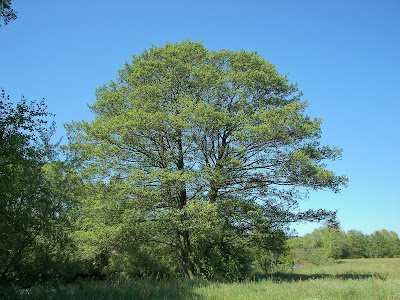Scientific Name: Alnus species
Family: Betulaceae (the Birch family)
Common Species:
- Italian Alder (Alnus cordata) – Medium, standard tree
- Black/Common Alder (Alnus glutinosa) – Large, standard tree
- Gray/Thinleaf Alder (Alnus incana) – Large, standard tree
- Seaside Alder (Alnus maritime) – Medium, standard tree
- Red Alder (Alnus rubra) – Large, standard tree
- Speckled Alder (Alnus incana subspecies rugosa) – Very large, multi-stemmed shrub
- Smooth/Hazel Alder (Alnus serrulata) – Large, multi-stemmed shrub
Red Alder buds and leaves.
Description:
Alders are very fast growing large shrubs to tall trees found throughout the Northern Hemisphere. One of the few trees that put nitrogen back into the soil, these plants have many other uses including windbreaks, hedges, firewood, timber, pollen and nectar source for beneficial insects, erosion control, habitat restoration, and traditional medicine to name but a few. Definitely a plant worth considering if you have the room.
Alnus glutinosa
History:
There are 30 species of flowering trees and shrubs that are native to the northern Temperate Climates of the Earth. They are mainly pioneer species that have been used as windbreaks and hedges as well as for wood. Most native cultures have medicinal uses for different parts of the plant as well. However, there has been very little development of these plants.
Trivia:
Alder’s flowers are born in cylindrical clusters called catkins.
USING THIS PLANT
Primary Uses:
- Ornamental tree or large shrub
- Nitrogen Fixer – puts nitrogen back into the soil which may be used as a fertilizer to other plants (actinorhizal)
- Windbreak or hedge (some species are great in maritime climates: Black, Italian, Gray, Seaside Alders)
- Wood – Firewood, Timber, Furniture, Paper, Mushroom Production
Secondary Uses:
- General insect (especially bees) nectar and pollen plant
- Coppice plant (harvest every 12-25 yrs for kindling, firewood, tool handles, crafts, poles, fence posts, charcoal, and in any situation where the wood needs to be repeatedly exposed to water)
- Plants with a shrub form can provide shelter for wildlife
- Living Trellis – the lower branches can be pruned to allow fruiting vine species a place to grow. The fruiting plant typically then gets a natural boost of nitrogen from the Alder trellis.
- Erosion Control – can be used to protect soil from erosion on steep banks
- Fantastic pioneer species – a plant used to re-establish woodlands on former farmlands or eroded/difficult sites (fixes nitrogen, grows fast, produces lots of leaf litter for soil building, and dies back as other trees shade it out)
- Biomass Production – since Alnus grows so fast
- Dye from bark, shoots, catkins (mainly from Black Alder)
- Tanning – leaves contain high amounts of tannin
- Edible Catkins – raw or cooked, used as an emergency food source (Red Alder)
- Edible Sap – can be used straight or concentrated to a syrup (Red Alder)
- Traditional medicinal uses (primarily bark)
DESIGNING WITH THIS PLANT
USDA Hardiness Zone: See below
AHS Heat Zone: See below (not all species have reliable Heat Zone information)
- Italian Alder (Alnus cordata) – USDA Hardiness Zone 6-9; AHS Heat Zone 9-6
- Black/Common Alder (Alnus glutinosa) – USDA Hardiness Zone 3-7; AHS Heat Zone 3-7
- Gray/Thinleaf Alder (Alnus incana) – USDA Hardiness Zone 2-6; AHS Heat Zone 6-1
- Seaside Alder (Alnus maritime) – USDA Hardiness Zone 7
- Red Alder (Alnus rubra) – USDA Hardiness Zone 4-7; AHS Heat Zone7-1
- Speckled Alder (Alnus incana subspecies rugosa) – USDA Hardiness Zone 2-6
- Smooth/Hazel Alder (Alnus serrulata) – USDA Hardiness Zone 5-8
Chill Requirement: No reliable information available, but as this is not a fruit plant, a chill requirement is not that important.
Plant Type: Medium to Large Tree, Medium to Large Shrub depending on the species
Leaf Type: Deciduous
Forest Garden Use: Canopy Layer, Shrub Layer
Cultivars/Varieties: Many species but very little development
Pollination: By wind. Flowers are monoecious (individual flowers are either male or female, but both can be found on the same plant).
Flowering: Spring, except for Seaside Alder which blooms in the Autumn
Life Span:
Years of Useful Life: Red Alder (Alnus rubra) can live to 100 years. Black/Common Alder (Alnus glutinosa) can live to 150 years
PHYSICAL CHARACTERISTICS OF THIS PLANT
Size:
- Italian Alder (Alnus cordata) – 30-50 feet (9-15 meters) tall and 20-35 (6-10 meters) feet wide
- Black/Common Alder (Alnus glutinosa) – 60-80 feet (18-25 meters) tall and 20-35 feet (6-10 meters) wide
- Gray/Thinleaf Alder (Alnus incana) – 40-60 feet (12-18 meters) tall and 25-40 feet (7-12 meters) wide
- Seaside Alder (Alnus maritime) – 20-30 feet (6-9 meters) tall and wide
- Red Alder (Alnus rubra) – 40-60 feet (12-18 meters) tall and 25-40 feet (7-12 meters) wide
- Speckled Alder (Alnus rugosa) – 20-35 feet (6-11 meters) tall and wide
- Smooth Alder (Alnus serrulata) – 12-20 feet (3.5-6 meters) tall and wide
Roots: Fibrous (Smooth Alder (Alnus serrulata) has suckering roots)
Growth Rate: Fast to Very Fast
Oyster mushrooms growing on a downed Alder log.
Alder can also be innoculated with mushroom spawn to farm your own mushrooms.
GROWING CONDITIONS FOR THIS PLANT
Light: Prefers full sun to light shade
Shade: Tolerates light shade
Moisture: Trees can handle dry soils, but all Alnus species can grow in wet soils
pH: most species prefer fairly neutral soil (5.5-7.5)
Special Considerations for Growing:
Relatively disease and pest free.
Propagation:
Primarily from seed. Hardwood cuttings in Autumn.
Maintenance:
None
Concerns:
None
Original Article Here














